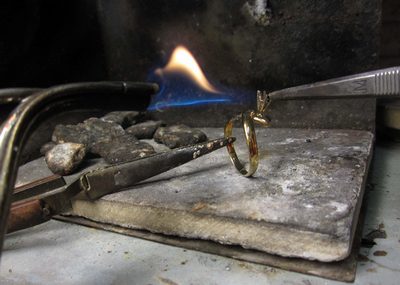|
The Manufacturing Process
Having a piece of jewellery custom-designed and made can be an exciting process, but it helps to have an idea
of what services can be offered by a professional manufacturing jeweller such as Alan Englert of Rainbow’s End.
The first step is to arrive at exactly the right design to give that “Wow! That looks fantastic!” feeling. Without
this reaction, a piece of jewellery is a mere object. There are many ways to determine what the customer will
be thrilled by in a design. Browsing through advertising pamphlets and brochures is a good start, and a couple
of such photos can be a great help to the jeweller in finalising the concept. Similiarly, an afternoon spent
browsing shop windows can assist by presenting hundreds of designs for consideration in a short time.
If nothing is just right, then Alan can start with a blank sheet of paper, and in a short time produce one or several
designs that will be close to, or exactly, what the customer wants.
Once the design is established, Alan can determine which of a variety of manufacturing processes will give
the best results. The traditional techniques, involving filing, hammering, bending and soldering the metal,
will usually be the best way to achieve a top-quality result. Alan will happily involve the customer in every
stage of the manufacture of their jewellery, including consulting with them during the steps of construction,
allowing them to give feedback on fine points of design and proportion. This is a virtual guarantee of replacing
"Hope I’m going to like it!" with "I can’t wait to see it finished!"
|





